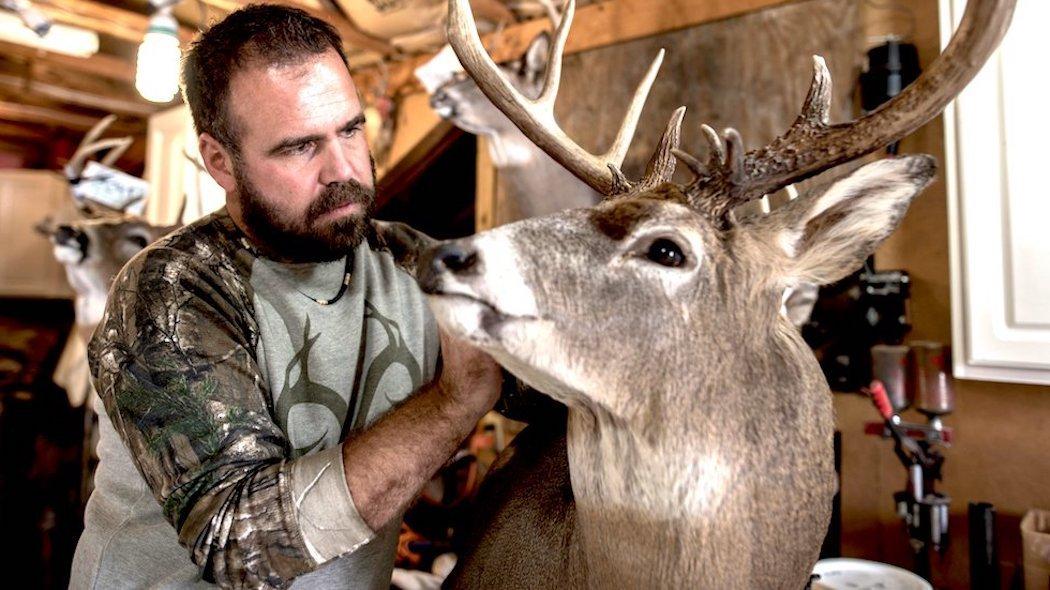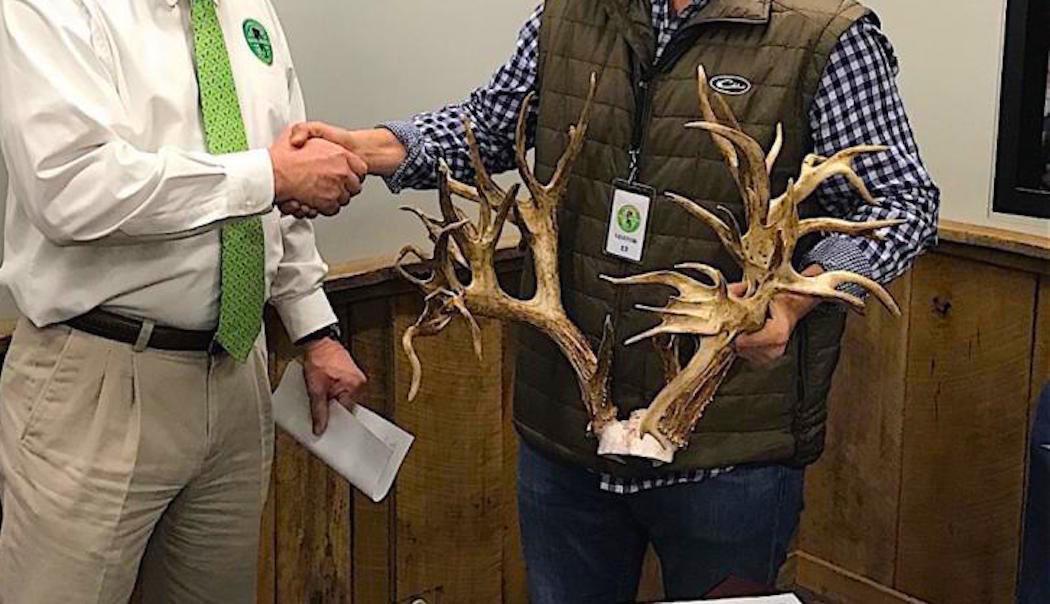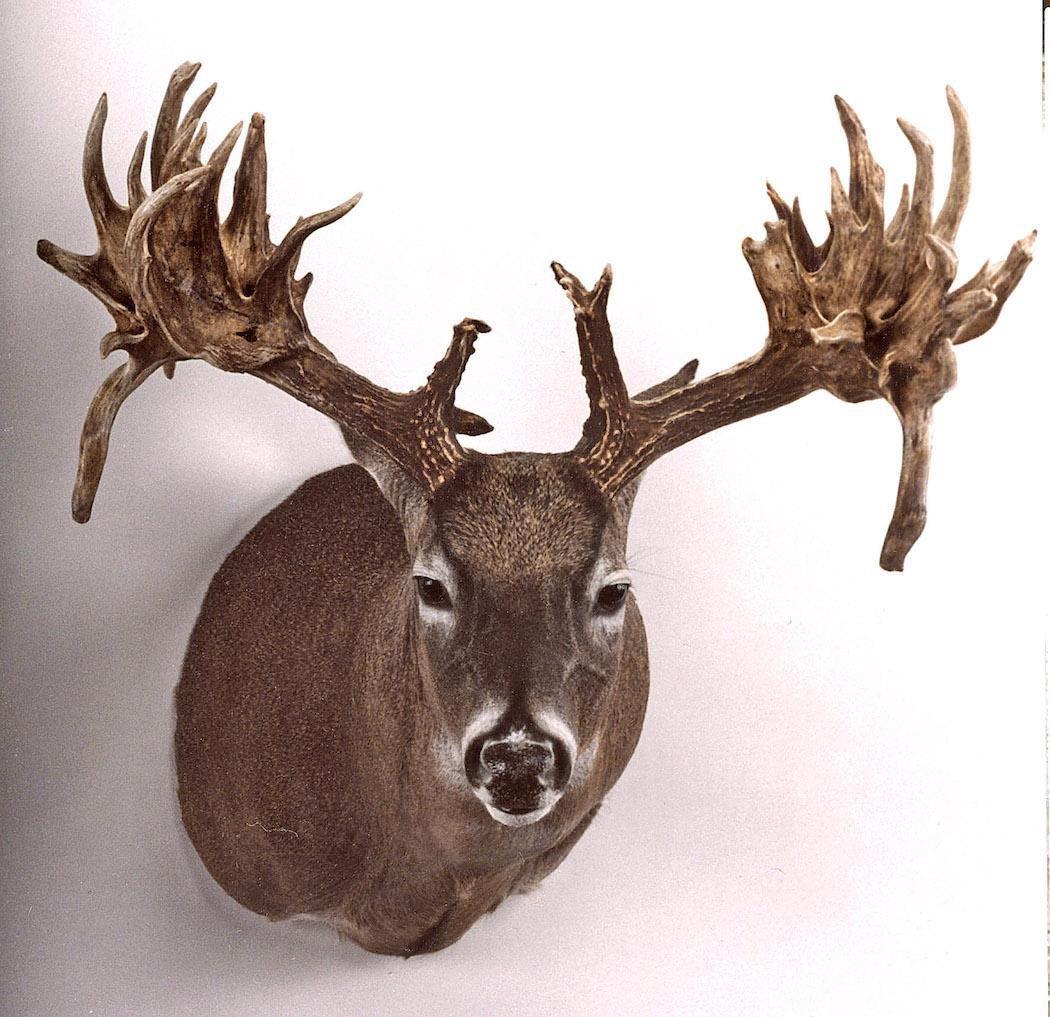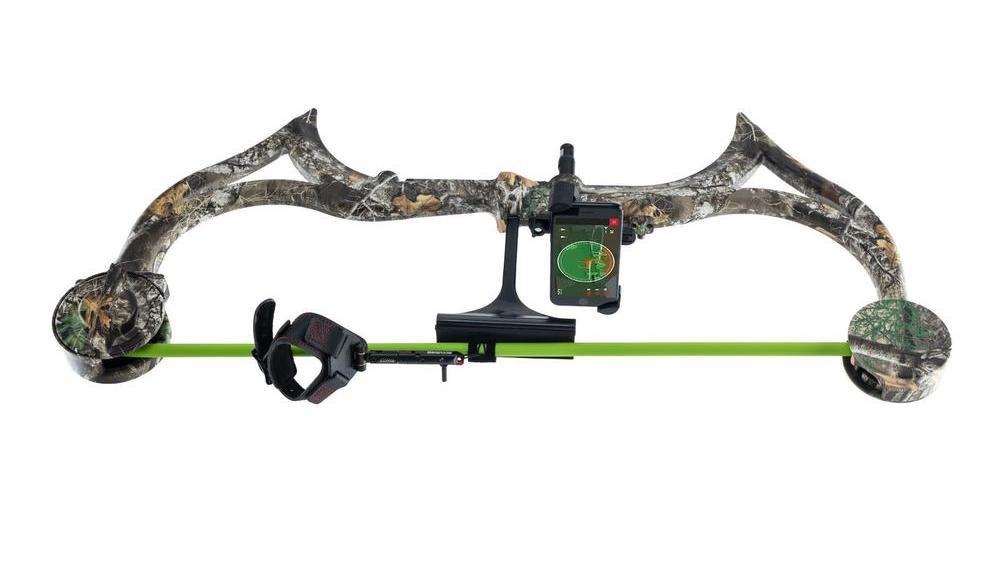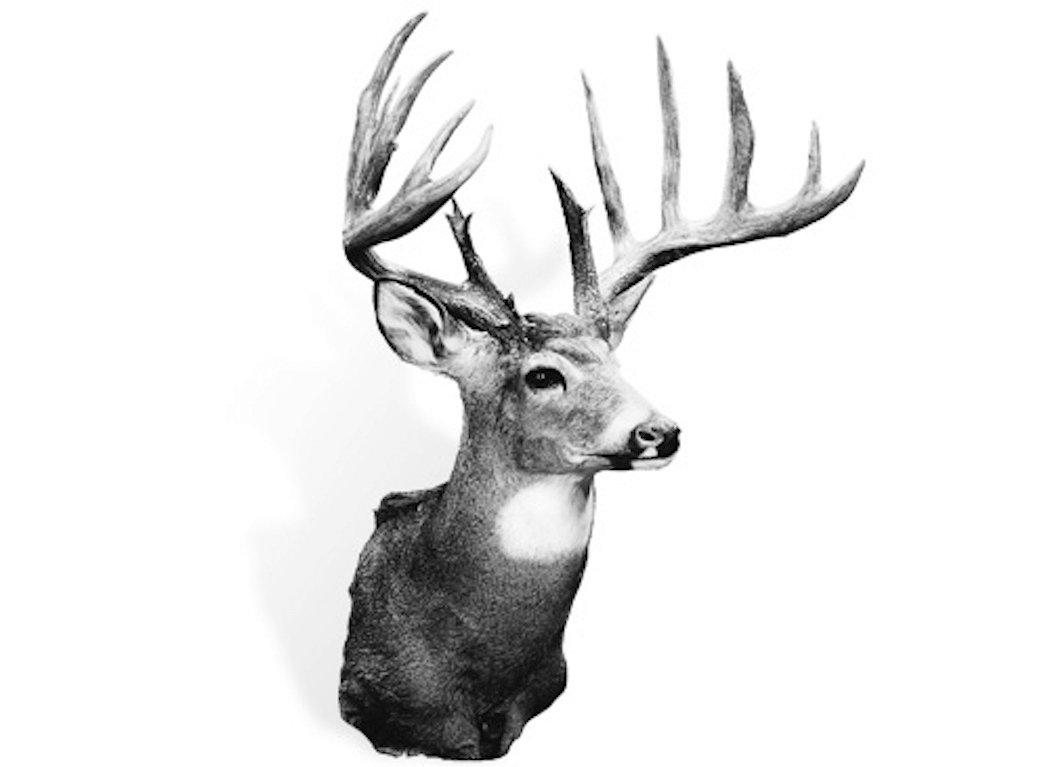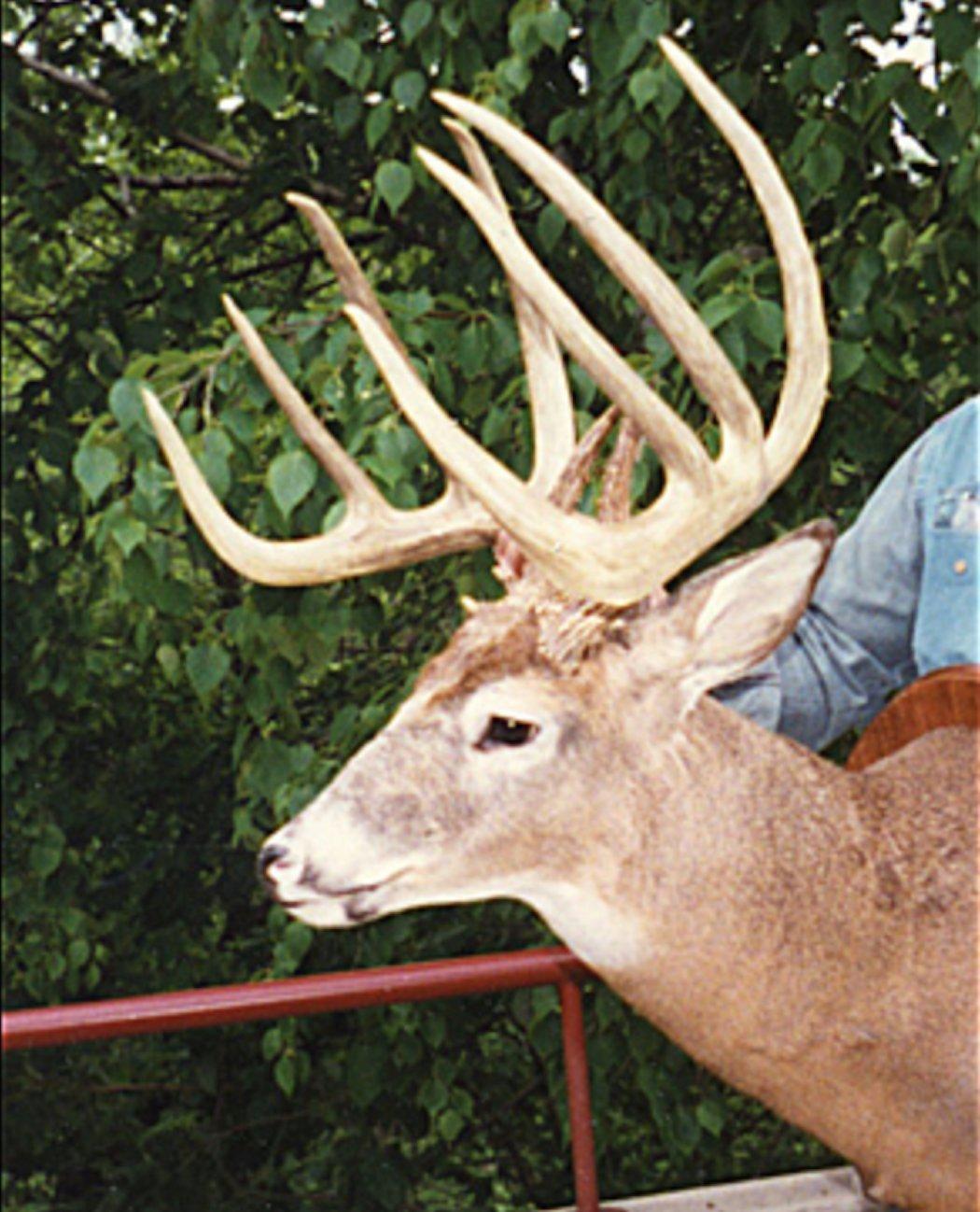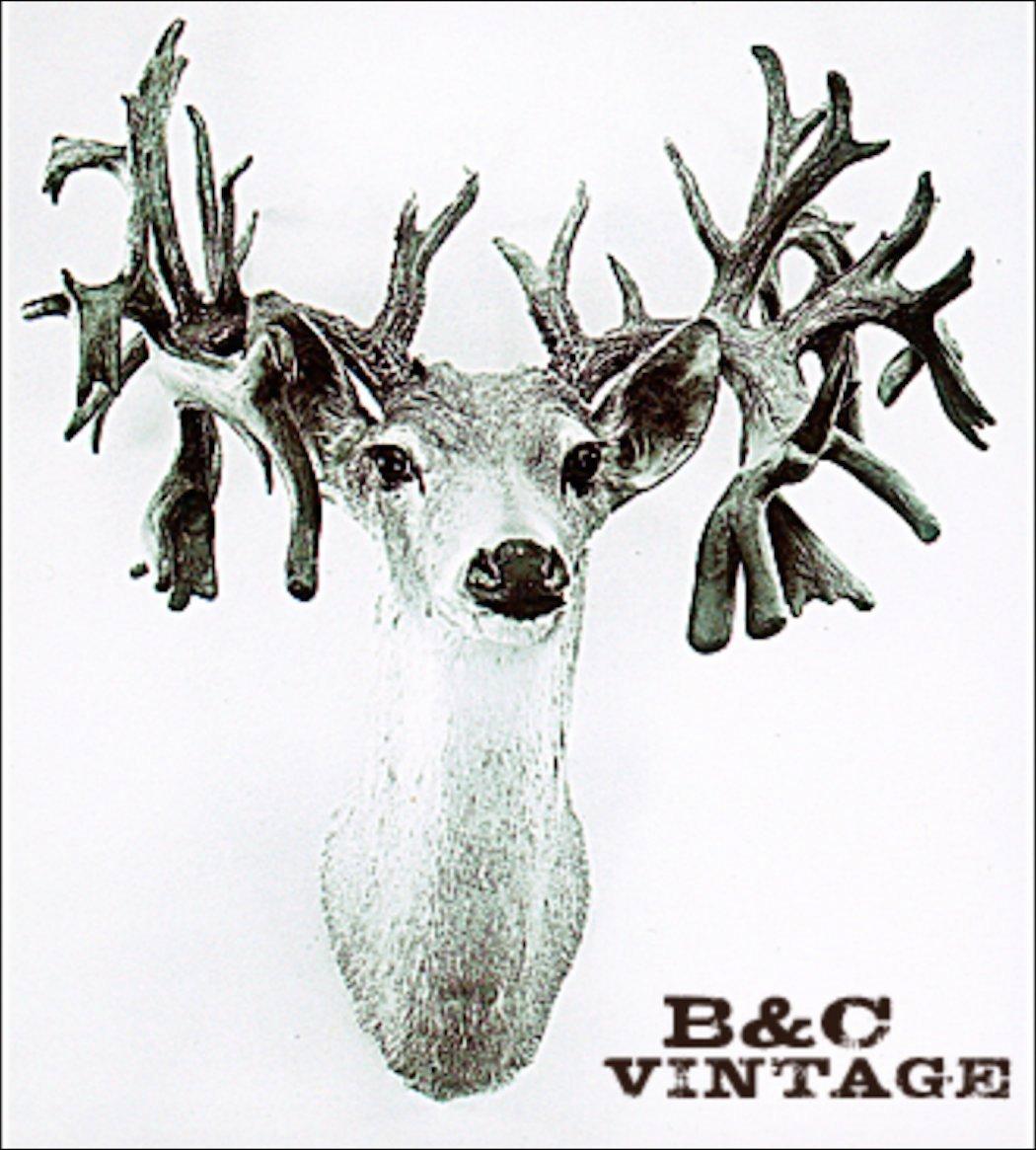A Look at the Largest Typical and Non-Typical Whitetails Taken, or Found, in Every State
Record bucks. They aren't what drive hunters to the woods each year. But they captivate our thoughts. They all have a story.
Do you know what your state record whitetails are? Wonder what other states produced? Here is every state record whitetail in the country. If it's a record holder, you'll find it below, courtesy of Boone and Crockett's Trophy Search. We're covering both sides of the aisle (typicals and non-typicals).
The Northeast
Areas of the Northeast are some of the most densely populated in the country, and the hunting pressure is often intense. The unbroken stretches of big woods don't make for ideal deer habitat, either. But nonetheless, there are some mega-giants lurking in the Northeast, as this record list proves.
Record Facts
- For perspective on how tough it is to shoot a Booner buck in the Garden State, there are 2,480 bucks in the books bigger than its state record.
- Maine has more typical whitetails in the books than any other northeastern state. It sits at No. 18 overall.
- Boone and Crockett bucks have been killed in every Delaware County. All three of them.
Maine
Ronnie Cox took the largest typical in 1965. The Aroostook County buck has held up for nearly 55 years, and is No. 79 all time. Well before that, in 1910, Hill Gould took the state's largest non-typical, in Washington County. It's No. 53 overall in its category.
Typical: 193 2/8 inches
Non-Typical: 259 inches
New Hampshire
John Klucky killed the state-record typical in Merrimack County. The beast was tagged in 2006. John Gravelle took the non-typical record well before that, in 1950, in Grafton County.
Typical: 187 2/8 inches
Non-Typical: 222 7/8 inches
New Jersey
With only seven other typical Booner bucks ever taken in the state, the Scott Borden buck takes top typical honors in New Jersey. He shot the buck in Monmouth County in 1995, a time when many other records were being broken throughout the country. The Darrell Capps buck, bagged in 2000 in Cumberland County, is the largest non-typical.
Typical: 189 4/8 inches
Non-Typical: 203 3/8 inches
Vermont
The largest Vermont typical was found dead; it was picked up in 1971 in Rutland County. Only two non-typical bucks have ever been entered from Vermont. George Tice's Essex County buck barely nudged out Ronald Moody's Addison County kill. The Tice buck was tagged in 1938.
Typical: 181 inches
Non-Typical: 190 6/8 inches
Massachusetts
The Kajetan Sovinski buck is the Massachusetts state-record typical, and is the 77th largest typical of all time, overall. It was taken in Franklin County in 2002. Interestingly, the non-typical record is barely larger than its counterpart. It was picked up in Norfolk County in 2004.
Typical: 193 3/8 inches
Non-Typical: 201 inches
Rhode Island
One of four, the biggest buck from the smallest state was picked up in 2011. It was found in Providence County. No non-typical large enough to make the book has ever been found or killed (and reported) in Rhode Island.
Typical: 176 4/8 inches
Non-Typical: None
Connecticut
Garry Lovrin shot the typical state-record in 1993 in Litchfield County. With only four non-typical entries in the books, Henry M. Konow, Jr.'s is the largest. It was taken in New London County in 2000.
Typical: 179 4/8 inches
Non-Typical: 201 7/8 inches
Delaware
Herbert Milam shot Delaware's largest typical in Sussex County back in 1978, and the record has stood ever since. The non-typical record is more recent, but also taken in Sussex County back in 2005 by Keith Lee.
Typical: 185 4/8 inches
Non-Typical: 208 4/8 inches
Maryland
The typical record is the 70th largest overall and was taken by Kevin C. Miller in Kent County back in 2002. The non-typical record was shot in Charles County by Donza Watson in 2007.
Typical: 194 inches
Non-Typical: 248 7/8 inches
New York
Taken in 1939, Roosevelt Luckey's Alleghany County typical is the 30th largest of all time. Homer Boylan took the non-typical record in the same county, in the same year. Interesting? Sure enough.
Typical: 198 3/8 inches
Non-Typical: 244 2/8 inches
Pennsylvania
Fritz Janowsky punched a tag on a stud Bradford County buck in 1943, and the typical whitetail is still the state's largest. Michael Ambrosia took the non-typical record in 2001 in Lawrence County.
Typical: 188 inches
Non-Typical: 230 2/8 inches
Don't Miss: Top 5 Typical Bucks from the Northeast | Top 5 Non-Typical Bucks from the Northeast
The Southeast
From Kentucky to Florida and Louisiana to Virginia, there are a lot of deer hunters and a rich hunting tradition in the Southeast. There have been a lot of big southern bucks taken over the years, too, but as you'll see on this list, some states' record holders put other states to shame.
Record Facts
- Kentucky has 693 typical bucks in the books. Florida has none. Florida does have two non-typical entries — both taken in the 40s and 50s.
- All three of South Carolina's non-typical entries originated from western border counties.
- When analyzing total B&C entries per square mile, Kentucky, Arkansas, Mississippi, West Virginia and Virginia take top honors, respectively.
Kentucky
Taken in 2000, Robert Smith shot the giant Pendleton County typical buck, the No. 5 largest in the world, in 2000. The largest Kentucky non-typical was picked up four years later in Henry County.
Typical: 204 2/8 inches
Non-Typical: 271 7/8 inches
Tennessee
The W.A. Foster buck was killed in Roane County in 1959. Stephen Tucker's non-typical record — once the largest hunter-killed non-typical in the country — was taken in Sumner County in 2016 and is the fourth largest non-typical of all time.
Typical: 186 1/8 inches
Non-Typical: 312 inches
Virginia
Jerry James made history in 1999 when he took the state-record typical buck in Buchanan County. James Smith did the same in 1992 when he shot his giant Warren County deer, which sits at No. 63 all time.
Typical: 189 2/8 inches
Non-Typical: 257 4/8 inches
West Virginia
Chad Scyphers took the state-record typical in 2014 in McDowell County. Charles McLaughlin shot the non-typical record in Wayne County in 1997.
Typical: 188 7/8 inches
Non-Typical: 231 5/8 inches
North Carolina
Terry Daffron took the record typical in Guilford County in 1987. With only six non-typical entries from the state, Don Rockett easily beat out the others with his Person County buck, taken in 1998.
Typical: 181 7/8 inches
Non-Typical: 228 4/8 inches
South Carolina
South Carolina only has 10 typical entries, and William Wyatt's Pickens County buck, taken in 1994, is the largest. Of the three non-typicals on the books, John Wood's Beaufort County monster is the biggest. It was shot in 1971.
Typical: 176 inches
Non-Typical: 208 5/8 inches
Georgia
In 1962, Buck Ashe killed the Georgia state-record typical buck in Monroe County. John Hatton Jr. took the largest Georgia non-typical in 1973, also in Monroe County.
Typical: 191 4/8 inches
Non-Typical: 240 3/8 inches
Florida
Interestingly, Florida does not have a typical state record. It does have two non-typical entries, though. In 1941, Clark Durrance shot the largest one, a Wakulla County buck that scored 201 3/8 inches (Florida's only other entry was taken 18 years later).
Typical: None
Non-Typical: 201 3/8 inches
Mississippi
The record Mississippi typical hails from Adams County, and was tagged by James Saunders in 2011. Mississippi's giant state-record non-typical is one of history's famous bucks, taken in 1995 by Tony Fulton in Winston County.
Typical: 184 6/8 inches
Non-Typical: 295 6/8 inches
Alabama
In 1986, George P. Mann picked up the largest typical ever found or shot in Alabama, in Lee County. Three years later, Jon G. Moss shot the state's largest non-typical (and the 49th largest overall) in Perry County.
Typical: 186 3/8 inches
Non-Typical: 259 7/8 inches
Louisiana
The largest typical whitetail was taken in Madison Parish in 1943 by John Lee. James McMurray's giant non-typical was taken in Tensas Parish in 1994.
Typical: 184 6/8 inches
Non-Typical: 281 6/8 inches
Arkansas
In 2015, Jacob Ayecock took the state-record buck in Drew County, which is the 57th largest typical of all time. William Dooley shot the state's largest non-typical in Prairie County. A Prairie County whitetail, it barely eclipsed the Ward buck's score, which was picked up five years earlier.
Typical: 195 2/8 inches
Non-Typical: 238 3/8 inches
Don't Miss: Top 5 Typical Bucks from the Southeast | Top 5 Non-Typical Bucks from the Southeast
The Midwest
Big bucks. When people thing about them, they think of the Midwest. That's where most top Booners come from. And deer like these don't come around every year — not even in the Midwest. They're legends.
Record Facts
- The Midwest owns three of the top five typical bucks. Alberta (the Hanson buck) and Kentucky (the Smith buck) have the other two.
- Likewise, the Midwest has four of the five in the non-typical category. Tennessee (the Tucker buck) currently sits at No. 4 overall.
- Wisconsin has entered 255 more non-typical bucks in the books than Ohio, the state with the next-highest number of entries.
Wisconsin
Wisconsin has more entries than any other state, and also some of the biggest. The famous James Jordon buck is the second largest of its kind, and it was killed in Burnett County in 1914. The largest non-typical was killed in 1973 by Elmer Gotz in Buffalo County — the most historically productive big-buck county in the nation.
Typical: 206 1/8 inches
Non-Typical: 253 inches
Michigan
Troy Stephens took the state-record Michigan typical in 1996, in Jackson County. That buck is No. 37 overall. The record non-typical was picked up in 2010 in Lenawee County.
Typical: 198 inches
Non-Typical: 246 2/8 inches
Illinois
This is home to the Melvin Johnson buck, the state's largest typical, taken in 1965 in Peoria County. It's the No. 4 typical of all time. Illinois is also the new home to the largest ever hunter-harvested deer. Luke Brewster's non-typical, taken in Edgar County, took the world by storm last fall.
Typical: 204 4/8 inches
Non-Typical: 320 5/8 inches
Indiana
Dave Roberts took the state's largest typical whitetail in 1985. The county is unknown, but the score sure isn't: It's the 53rd largest typical whitetail of all time. Timothy Beck's buck is also no stranger to the public eye. It's Indiana's largest non-typical, taken in Huntington County is 2012, and the sixth largest of all time.
Typical: 195 5/8 inches
Non-Typical: 303 7/8 inches
Having a record buck walk out in front of you isn't something I've ever experienced. But I imagine it's a real nerve wrecker. Prepare for the moment of truth with the all-new Accubow.
Ohio
Bradley Jerman took a Warren County typical in 2004 that would end up becoming the state record, and the No. 11 typical of all time. Known as the famous Hole in the Horn buck, Ohio's state-record non-typical was picked up in Portage County in 1940. It's the second largest whitetail of all time.
Typical: 201 1/8 inches
Non-Typical: 328 2/8 inches
North Dakota
Kevin Bruner took the record typical in Pierce County in 1994. It currently sits at No. 57 overall. Roger Ritchie's non-typical, taken in Stanley County in 1968, is the 75th largest of all time.
Typical: 195 2/8 inches
Non-Typical: 254 6/8 inches
South Dakota
Michael Mettler's McPherson County buck is the largest typical from South Dakota. He shot it in 2014. Frances Fink's Marshall County buck from 1948 is the state's largest non-typical, and it sits at No. 71 overall.
Typical: 194 1/8 inches
Non-Typical: 256 1/8 inches
Nebraska
Vernon Virka took the state-record typical in 1983 in Saunders County. That buck is the 21st largest typical of all time. The 14th biggest all-time non-typical, the Wesley O'Brien buck, was taken in Richardson County in 2009.
Typical: 199 2/8 inches
Non-Typical: 284 inches
Kansas
The lucky individual and county of origin are unknown, but the largest Kansas typical was found dead in 1999. It's currently in the possession of the Kansas Department of Wildlife and Parks, and it is the 21st largest typical in the world. The non-typical record was also picked up, in 2012, in Marshall County.
Typical: 199 2/8 inches
Non-Typical: 295 inches
Minnesota
Beltrami County is the home of the state-record typical, taken in 1918 by John Breen. It's the 9th largest typical of all time. Coming in at No. 33 overall, the state-record non-typical was shot in 1974 by Mitchell Vakoch in Norman County.
Typical: 202 inches
Non-Typical: 268 5/8 inches
Iowa
In 1969, David Brenigar took the state's largest typical in Wapello County. The Tony Lovstuen buck was taken in Monroe County in 2003, and for years held the honors of being the largest hunter-taken non-typical. It now stands at No. 5 all time.
Typical: 202 inches
Non-Typical: 307 5/8 inches
Missouri
The home of the Cardinals is also home to the legendary Larry Gibson buck. Gibson shot the deer in 1971 in Randolph County, and it's the third largest typical of all time. Missouri is also home to the world-record whitetail, called the Missouri Monarch. The 1981 find was in St. Louis County.
Typical: 205 inches
Non-Typical: 333 7/8 inches
Don't Miss: Top 5 Typical Bucks from the Midwest | Top 5 Non-Typical Bucks from the Midwest
The Northwest
The Pacific Northwest is heralded for elk, blacktail and black bear hunting. Most people don't know how good this region is for whitetails. It produces incredible deer. You'll quickly realize that from this list.
Record Facts
- The hotspot for big deer in the Northwest is western Montana, eastern Washington and northern Idaho.
- Only one state, Montana, ranks in the top 20 when analyzing the total number of record entries in the last 10 years.
- Not a single Northwestern state makes the top 20 when analyzing total number of entries per square mile of huntable land mass in the last 10 years.
Washington
The top typical from Washington was shot by James Cartwright in Stevens County, back in 1992. It ranks No. 13 overall. The non-typical record was taken in 1946 by an unknown hunter in an unknown location.
Typical: 200 3/8 inches
Non-Typical: 242 4/8 inches
Oregon
With only six typical entries total, Sterling Shaver has the state's largest, with his Wallowa County giant taken in 1982. Nancy Garrett's Grant County buck, shot in 2007, is the only non-typical whitetail ever entered in the B&C record books from Oregon.
Typical: 178 2/8 inches
Non-Typical: 189 inches
Idaho
The state-record typical was taken in 2001 by Ronald McLamb, in Bonner County, and it only beats the state's second-largest typical buck by 3/8 inch. Taken by Herman Lunders, the largest non-typical was shot in Idaho County in 1955.
Typical: 186 7/8 inches
Non-Typical: 267 4/8 inches
Montana
Thomas Dellwo took the record typical buck in Missoula County in 1974, and it's the 20th largest of all time. Frank Pleskac shot the non-typical record in Hill County in 1968, the 87th largest ever entered.
Typical: 199 3/8 inches
Non-Typical: 252 1/8 inches
Wyoming
No. 1 of 15 typical entries, the Robert Ross buck from Albany County was taken in 1986. Bobby Leeman took the other top spot in 1998 with his Park County non-typical, which is the 46th largest overall.
Typical: 191 5/8 inches
Non-Typical: 261 5/8 inches
Don't Miss: Top 5 Typical Bucks from the West | Top 5 Non-Typical Bucks from the West
The Southwest
Thoughts of big mulies and elk keep southwestern hunters up at night. Not whitetails, right? Wrong. This region harbors a great population of them. Not only that but it's also home to the storied Coues whitetail. The Southwest has a stronger whitetail-hunting tradition than most realize.
Record Facts
- South Texas, eastern Colorado and eastern Oklahoma are the obvious hotbeds for Booner bucks in this region.
- Texas and Oklahoma fall at No. 10 and 13, respectively, when analyzing the total number of record entries per state in the last 10 years. The other states rank outside the top 20.
- Oklahoma is the only southwestern state that makes the top 20 when analyzing total entries per square mile of huntable land mass in the last 10 years. It ranks No. 17.
Arizona
In 1953, the state-record typical Coues whitetail was taken by Ed Stockwell in Prima County. The non-typical record — which is nearly 40 inches bigger than the second largest entry — was taken by an unknown hunter in Graham County in 1971.
Typical: 144 1/8 inches
Non-Typical: 196 2/8 inches
New Mexico
The largest (and only) typical whitetail (Coues deer excluded) is Bret Dillon's Union County buck, taken in 2004. The top Coues typical was shot in Grant County in 1981 by Victor Giacoletti, Jr. Peter Chase shot the biggest non-typical in Hidalgo County in 1941.
Typical: 167 3/8 inches (whitetail) / 134 4/8 inches (Coues whitetail)
Non-Typical: 186 1/8 inches (Coues whitetail)
Colorado
In 2003, Eddie Kinney took the largest Colorado typical ever, in El Paso County. In 1992, Michael Okray shot the largest non-typical buck, in Cheyenne County.
Typical: 192 1/8 inches
Non-Typical: 258 2/8 inches
Oklahoma
Jason Boyett shot the Oklahoma state-record, and the 94th largest typical of all time, in 2007 in Pushmataha County. Bill Foster took a Johnston County buck in 1970 that remains the state's top non-typical to this day.
Typical: 192 5/8 inches
Non-Typical: 247 2/8 inches
Texas
The Tom McCulloch buck, taken in 1963 in Maverick County, is the state-record typical and the 47th largest of all time. Texas ranks a little better in the other category, though, with the 13th largest non-typical of all time, taken in 1892 in McCulloch County by an unknown hunter.
Typical: 196 4/8 inches
Non-Typical: 284 3/8 inches
The Top States for Boone and Crockett Whitetails in the Last 10 Years
Deer hunting is about many things. And I assure you that while it isn't all about big deer, we would all love to set our sights on a truly incredible representation of the species. Most hunters who say otherwise aren't being entirely truthful with themselves.
More importantly, while quality deer management and trophy management are not the same thing, having a balanced age structure (and bigger bucks) does translate to a healthier deer herd. It's one of the biggest tell-tale signs that a state's deer population is thriving.
It's important to note that record bucks are rare — even under perfect conditions. It takes a lot to get them there. They need three things to achieve record status: age, nutrition and genetics; and they need a lot of each. Record-keeping systems, such as the Boone and Crockett Club's, help to retain important information on what states are succeeding at conservation and quality deer management, and which ones aren't . . . continue reading . . .
Are you a deer hunter wanting to learn how to accomplish your goals? Check out our stories, videos and hard-hitting how-to's on deer hunting.

